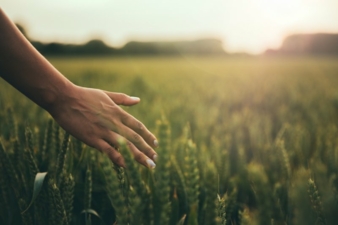05/01/2021 – With more transparency into a more sustainable future — auf Deutsch lesen
Oeko-Tex new regulations 2021
Oeko-Tex is committed to responsible action by companies and consumers in the textile and leather world.
Secretary General Georg Dieners:
“Oeko-Tex aims to provide customers and partners with the best possible services and certifications. For this reason, the test criteria for Oeko-Tex standards are updated at least once a year based on new scientific information or statutory requirements. A special project in 2021 will be the integration of the carbon and water footprint into our Made in Green label.”
An overview of the most important changes and innovations:
Recycled materials in Standard 100 by Oeko-Tex
In times of climate change and dwindling raw materials, there is an increased demand for fashion and textile products made of already used materials. Oeko-Tex has developed an approach to integrate recycled materials for greater sustainability as part of the Standard 100 by Oeko-Tex. This uniform approach requires a minimum amount of recycled material in an article, different test programs depending on the origin of the material and the definition of the necessary background information. A hangtag informs consumers about recycling in the sense of a circular economy. Recycled materials are difficult to certify. With their previous life, recycled materials pose different challenges than virgin material. For this reason, they are treated differently within the Standard 100 by Oeko-Tex and receive a special mention in the scope of the certificate.
Leather Standard by Oeko-Tex – chrome- and metal-free tanned leather
As part of the Leather Standard by Oeko-Tex, Oeko-Tex partner institutes will in future also certify chrome- and metal-free tanned leather. These natural products are tested for tanning metals with different limit values and receive a special mention in the scope of the certificate.
Made in Green and Step by Oeko-Tex
Certifications are proving to be increasingly in demand – the sustainable label for textiles and leather articles Made in Green by Oeko-Tex is once again the strongest-growing Oeko-Tex product. Compared to the previous year, the number of valid labels rose by 267 percent from 1,093 to 4,010 (as at 31/12/2020).
Oeko-Tex’s objective for 2021 is the systemic integration of the carbon and water footprint into the Made in Green label. This will enable consumers to find out directly, by scanning the label of each product, what impact the manufacture of the respective article has on our ecosystem. In order to evaluate the feasibility and examine how the carbon and water footprint can be incorporated as an integral part of the Oeko-Tex portfolio, Oeko-Tex has launched a pilot project at the end of 2019 in cooperation with Calida, a globally active supplier of underwear and nightwear clothing, and Quantis, a leading international sustainability company known for their metrics-based approach to sustainability. The intention behind product labels is to guide consumers towards products with transparent information on their supply chain and produced by technologies with low environmental impacts.
Virtual Audits due to travel and contact restrictions imposed by Covid-19
Oeko-Tex has introduced virtual assessments of production sites due to travel and contact restrictions imposed by Covid-19. This applies to assessments for Standard 100 and Leather Standard by Oeko-Tex as well as virtual on-site visits for Step and Eco Passport certifications.
New and updated limit values
Per- and polyfluorinated alkyl compounds (PFAS) are industrial chemicals that are mainly used in coatings for textiles such as outdoor clothing. Based on a recent EU risk assessment, Oeko-Tex has also changed its limit values for PFOA (perfluorooctanoic acid) and salts as well as PFOA-related substances. In Eco Passport by Oeko-Tex titanium dioxide (TiO2) has been added to the CAS number screening for respirable size particles.
In this context, Step by Oeko-Tex MRSL has also been expanded to include titanium dioxide (TiO2) for respirable sized particles. Oeko-Tex has been part of a ZHDC team that recently published the first ZDHC White paper on air emissions. As part of the harmonization process, Oeko-Tex has tightened the Sulphur dioxide (SO2) limits for air emissions from solid and liquid fuels as part of Step by Oeko-Tex. Overall, the strict requirements for residues in textile materials also lead to a lower impact on the environment, employees and consumers.
New substances under observation
Oeko-Tex is also observing various substances in 2021 based on the latest scientific findings and conformity with relevant specifications. This primarily concerns some substances newly classified as SVHC, which, according to the REACH regulation for the protection of human health and the environment, have been identified as having particularly hazardous characteristics. These include diisocyanates, which can trigger allergic reactions through skin contact and inhalation. The chemical compounds dibutyltin bis(acetylacetonate), 2-methylimidazole and 1-vinylimidazole will also be closely examined in the future.
A free webinar with detailed information on all new Oeko-Tex regulations is available on January 14th, 2021 via the website.
The 2021 new regulations for all Oeko-Tex products are available in detail here.




